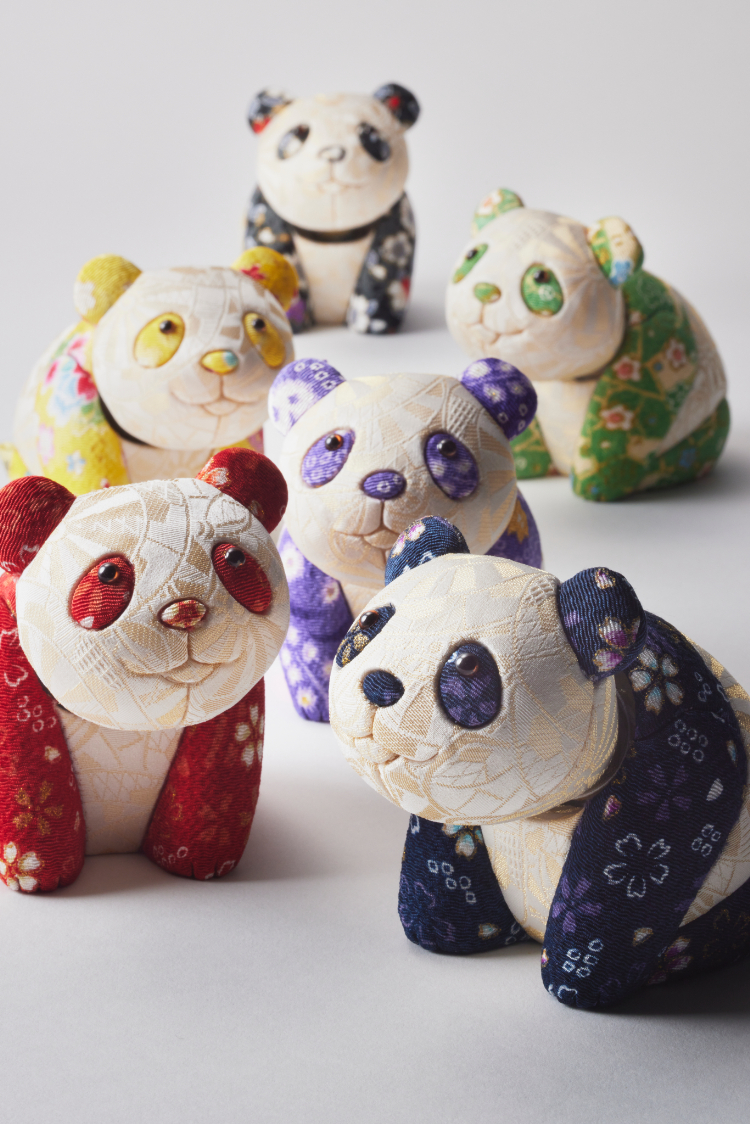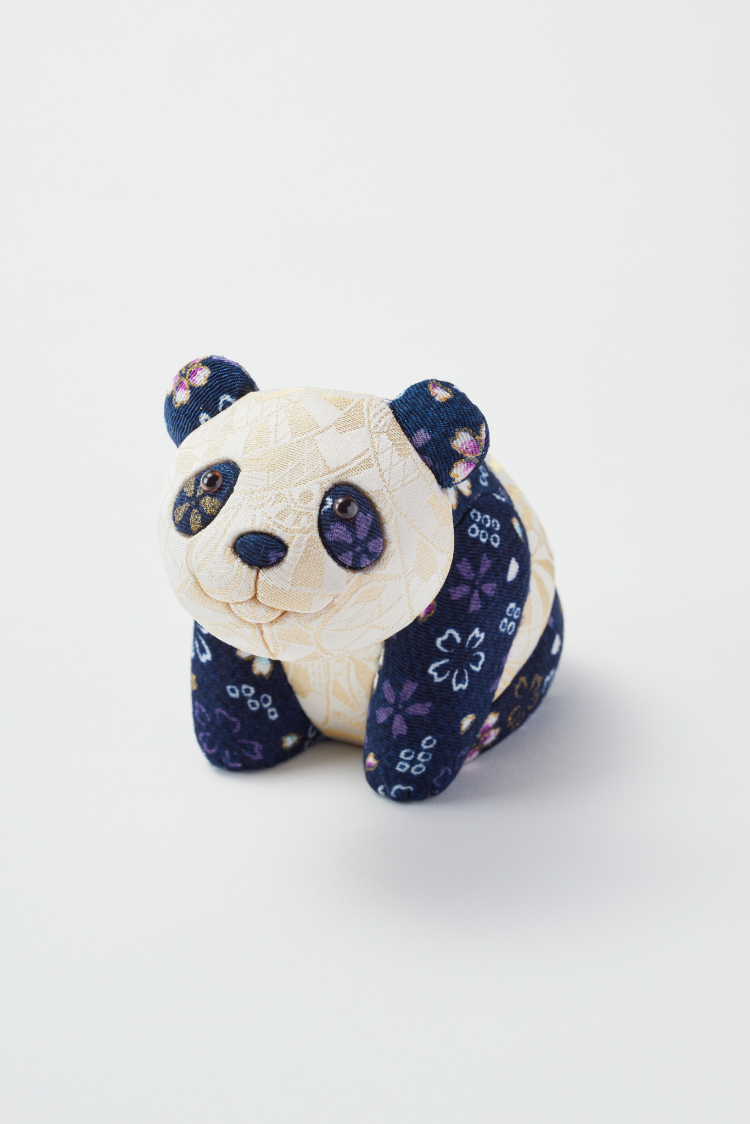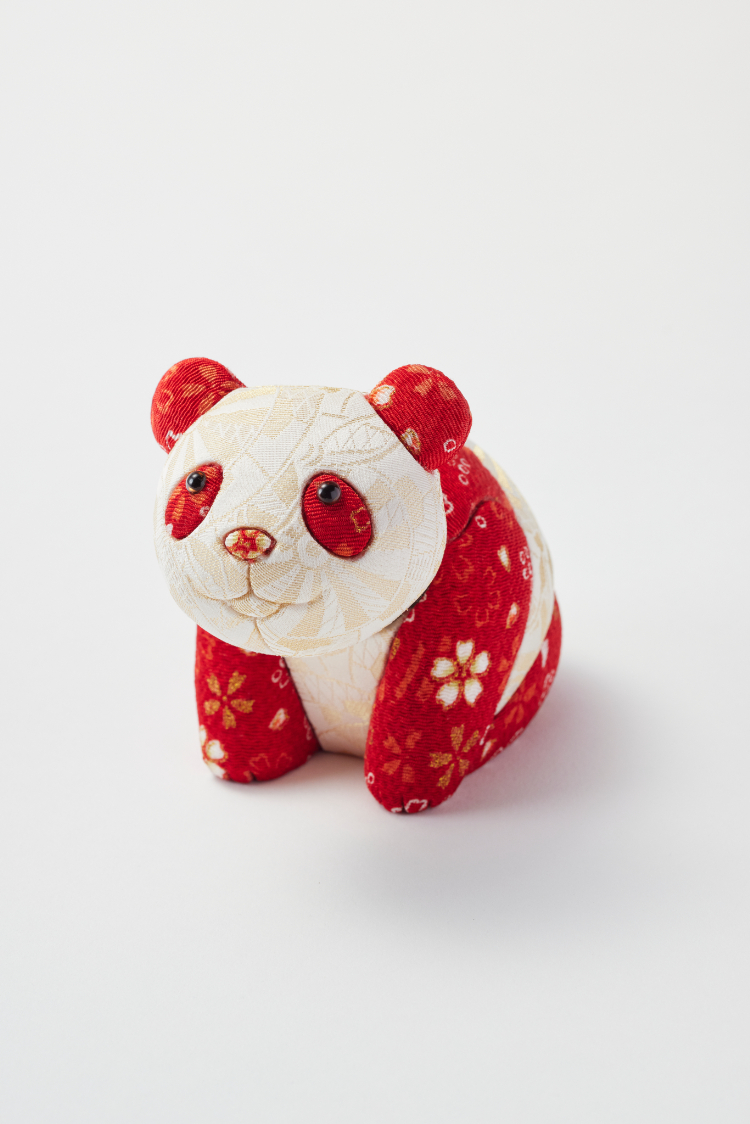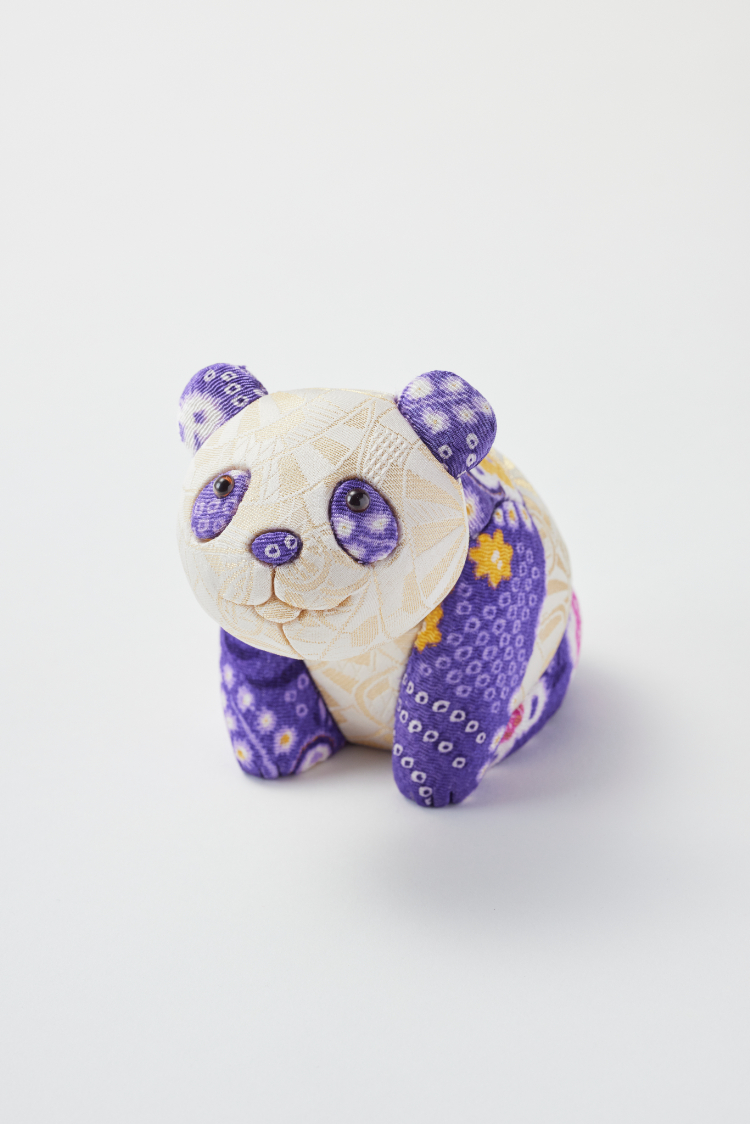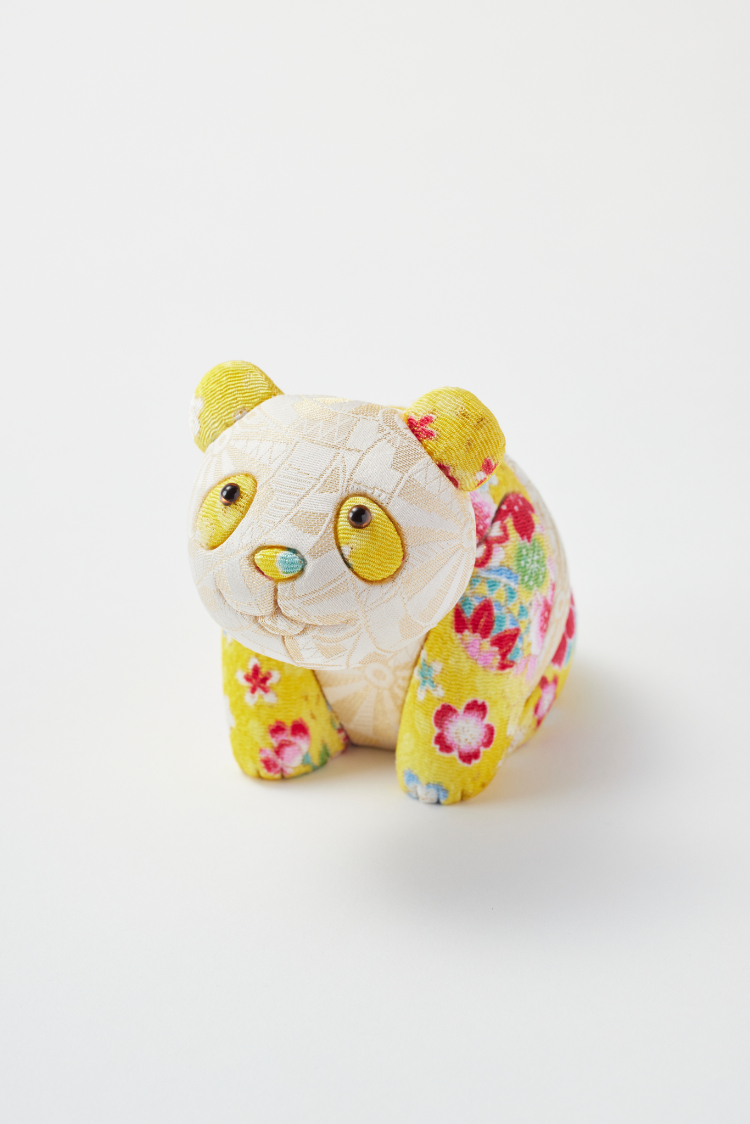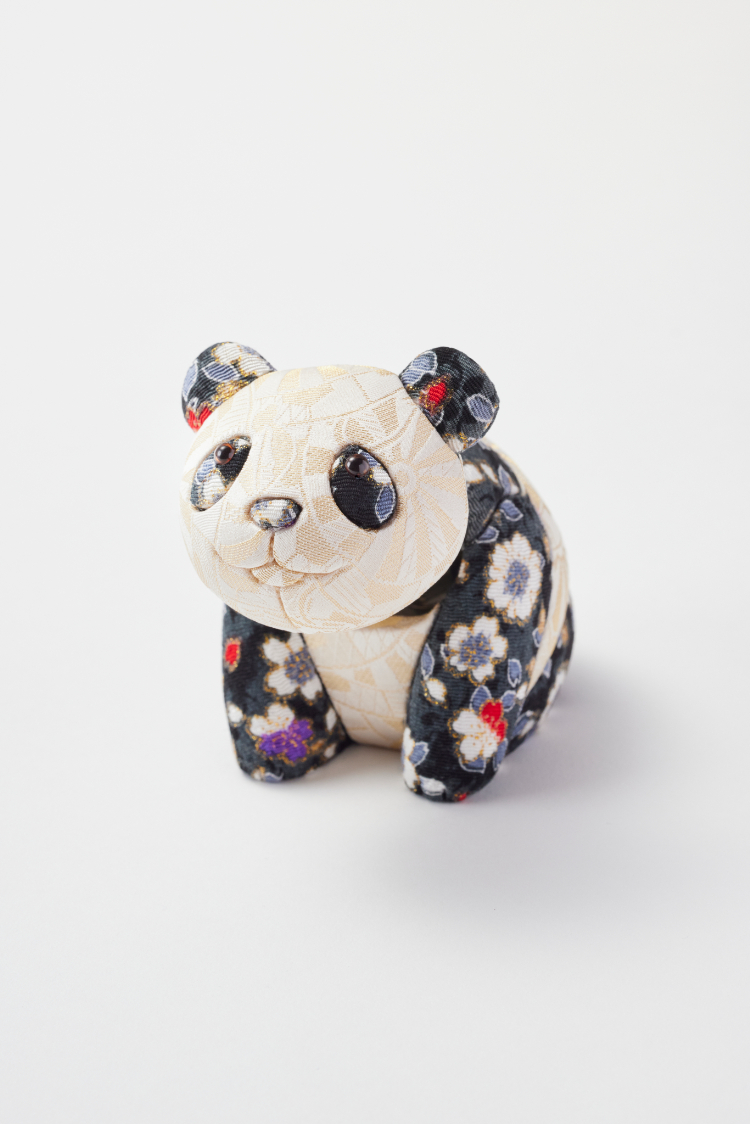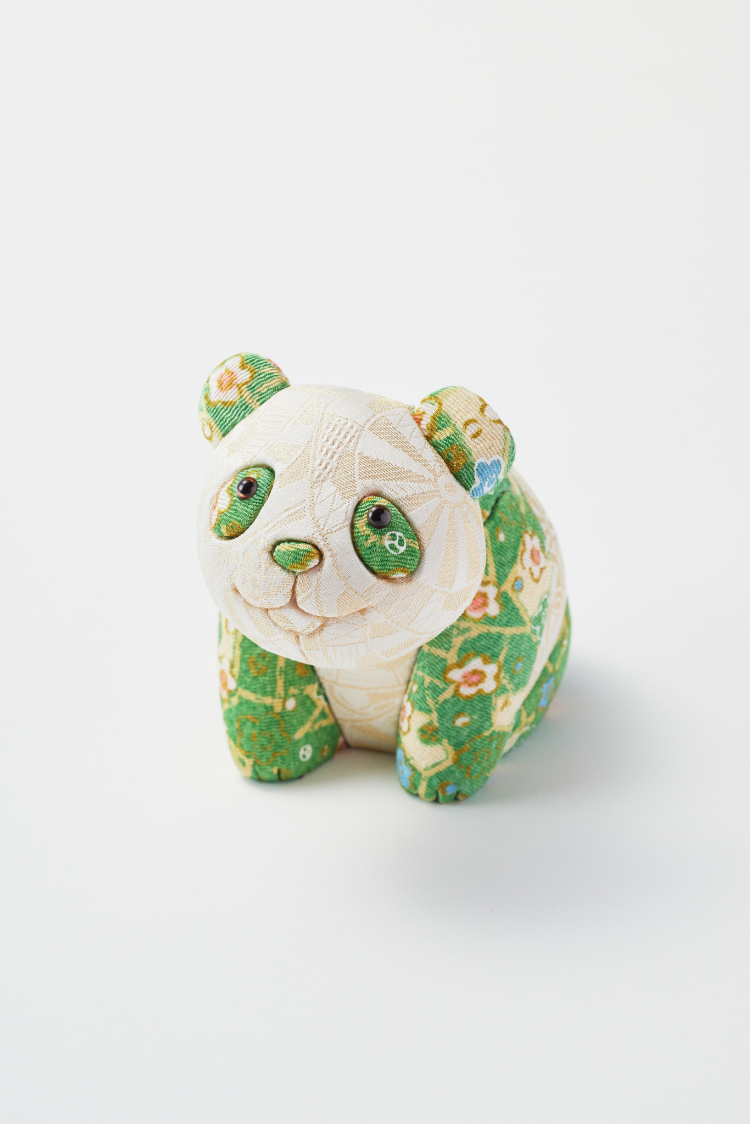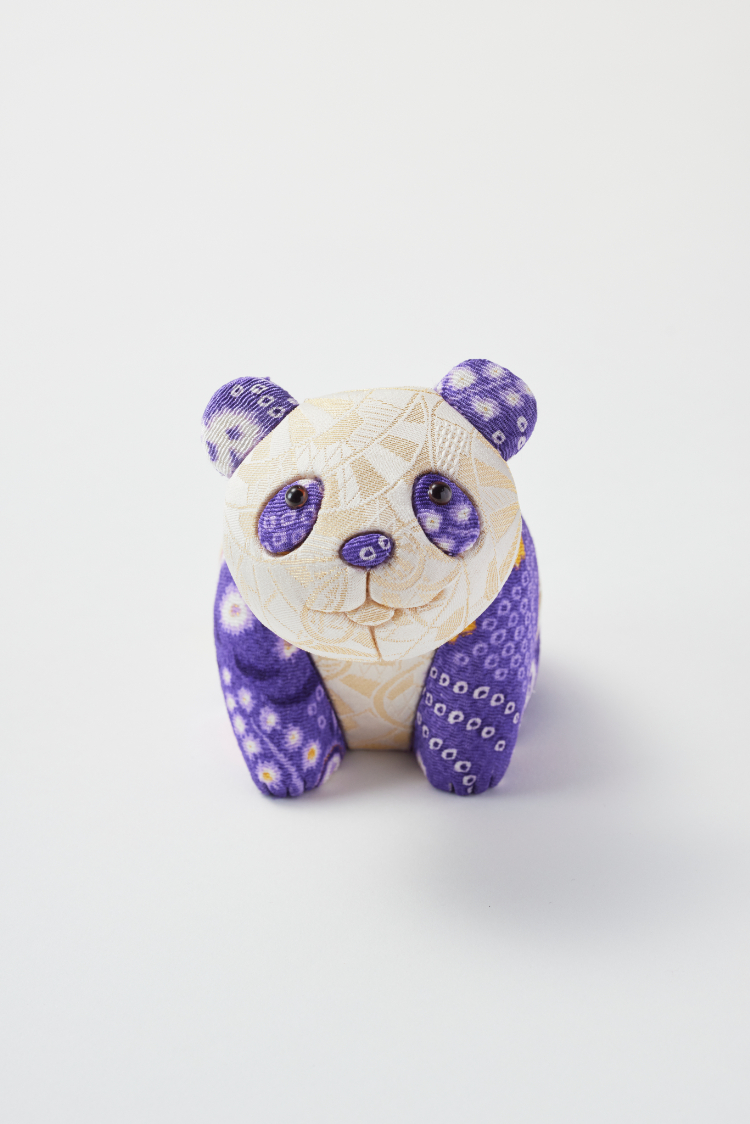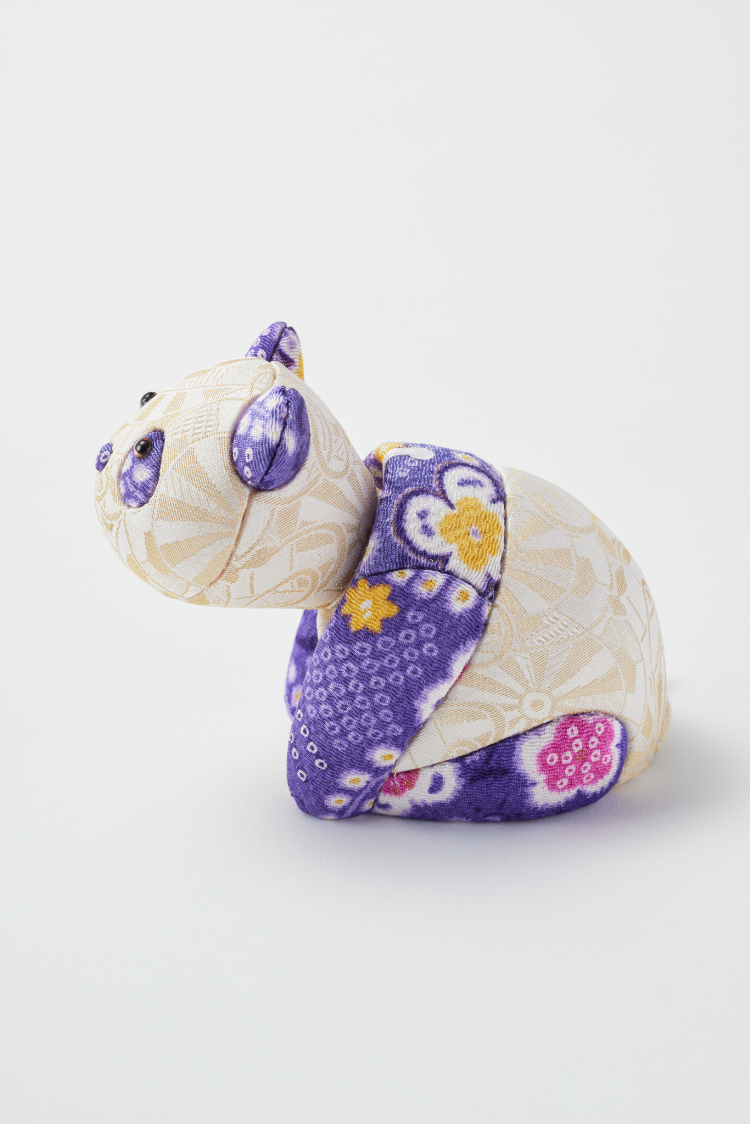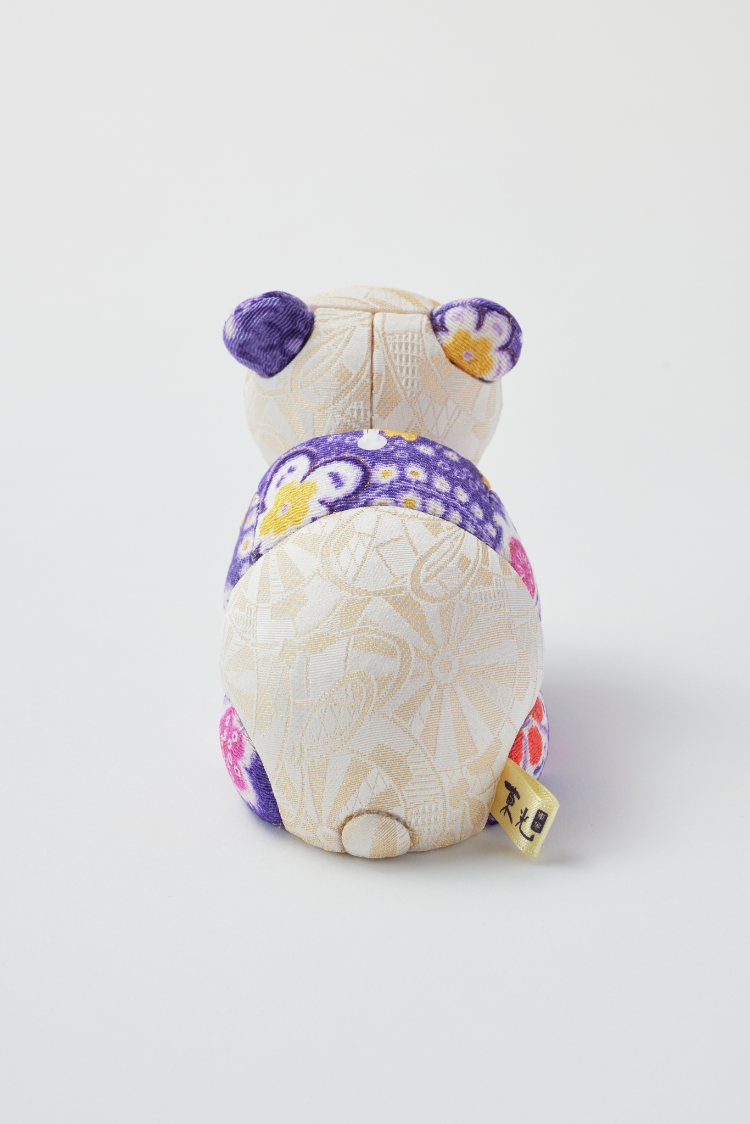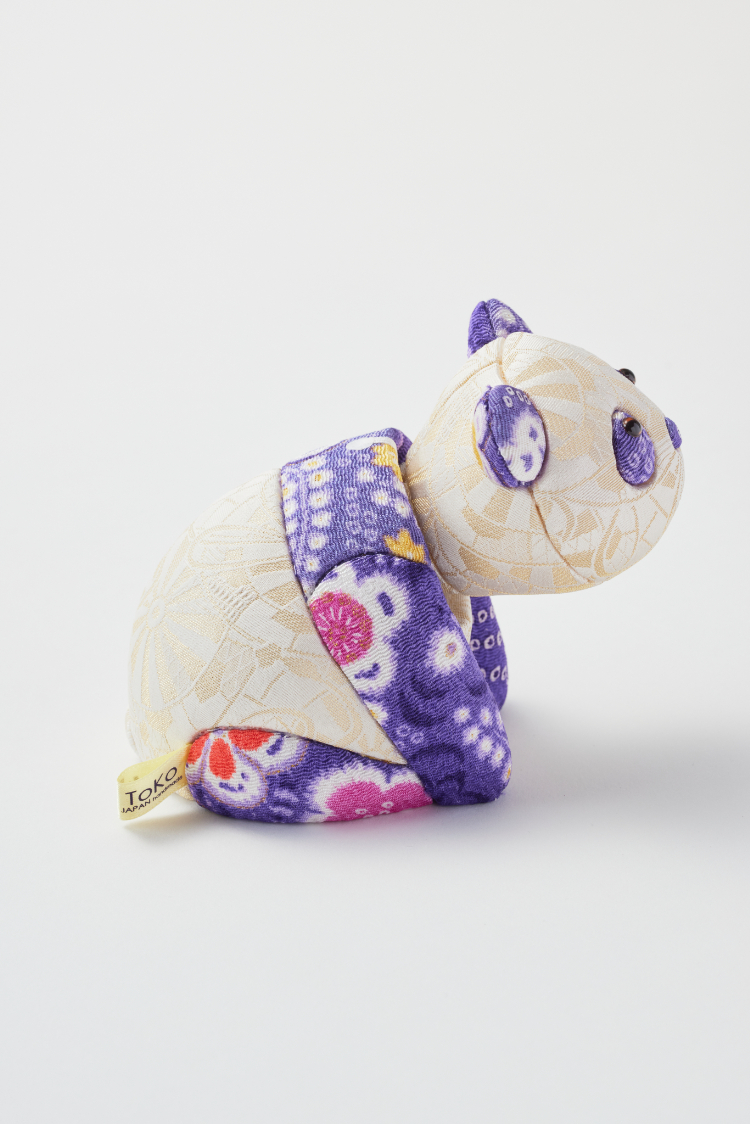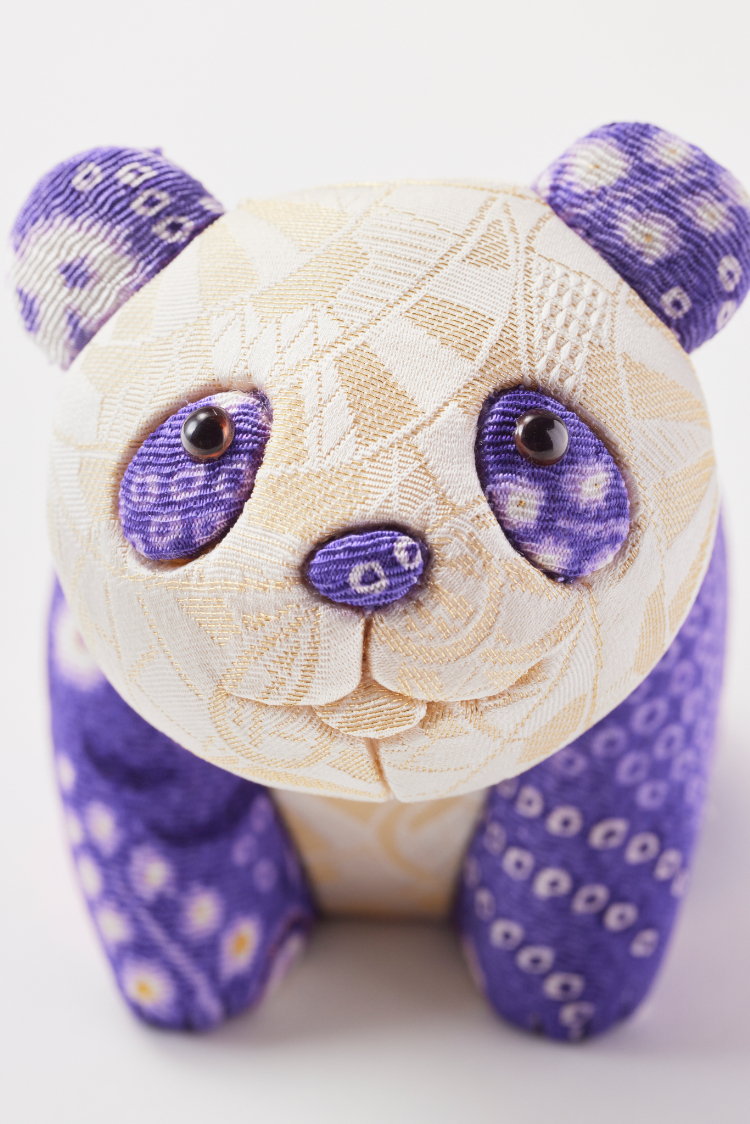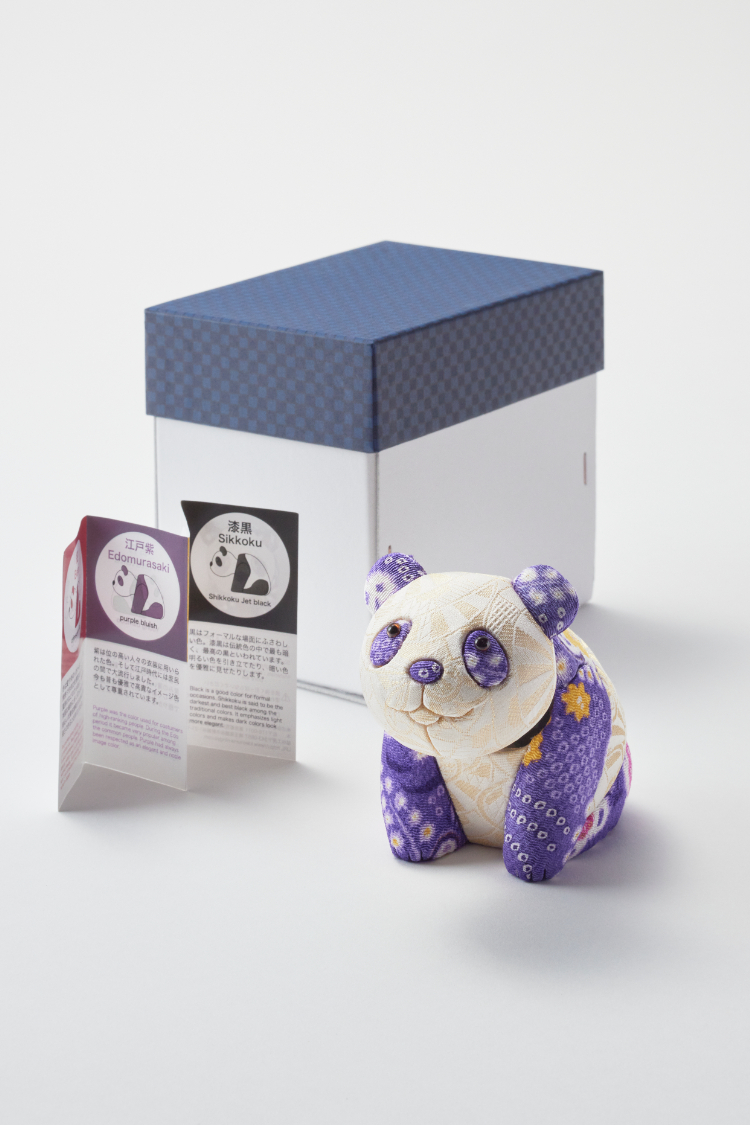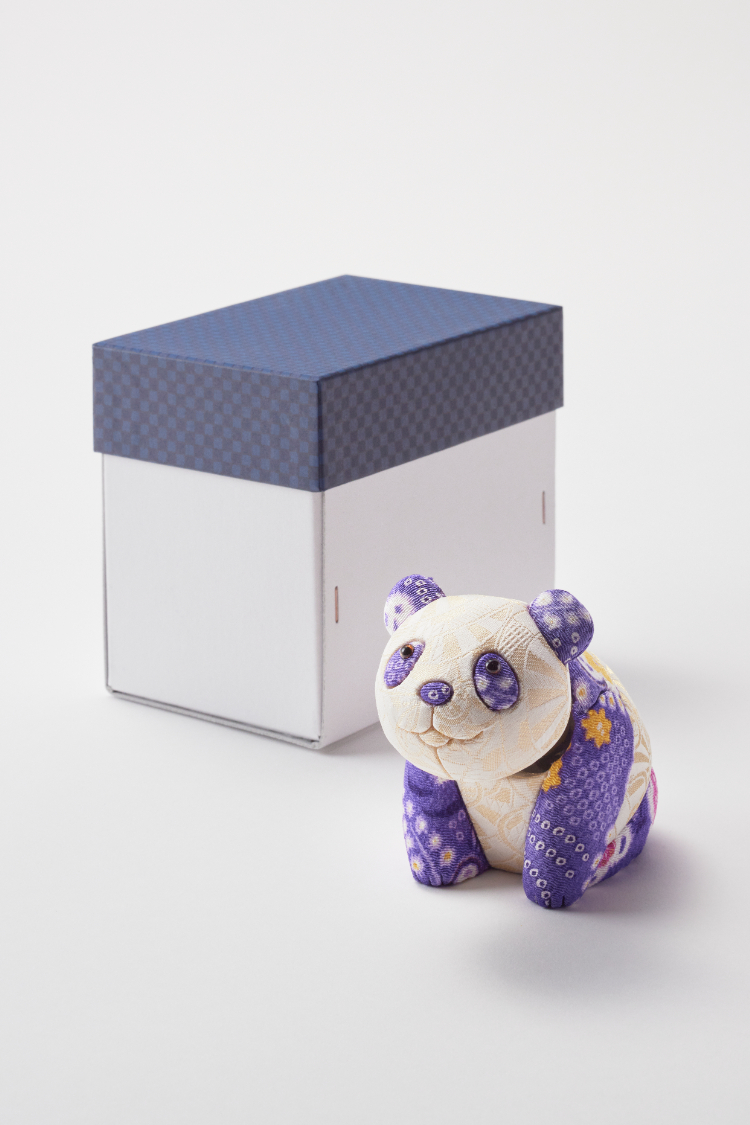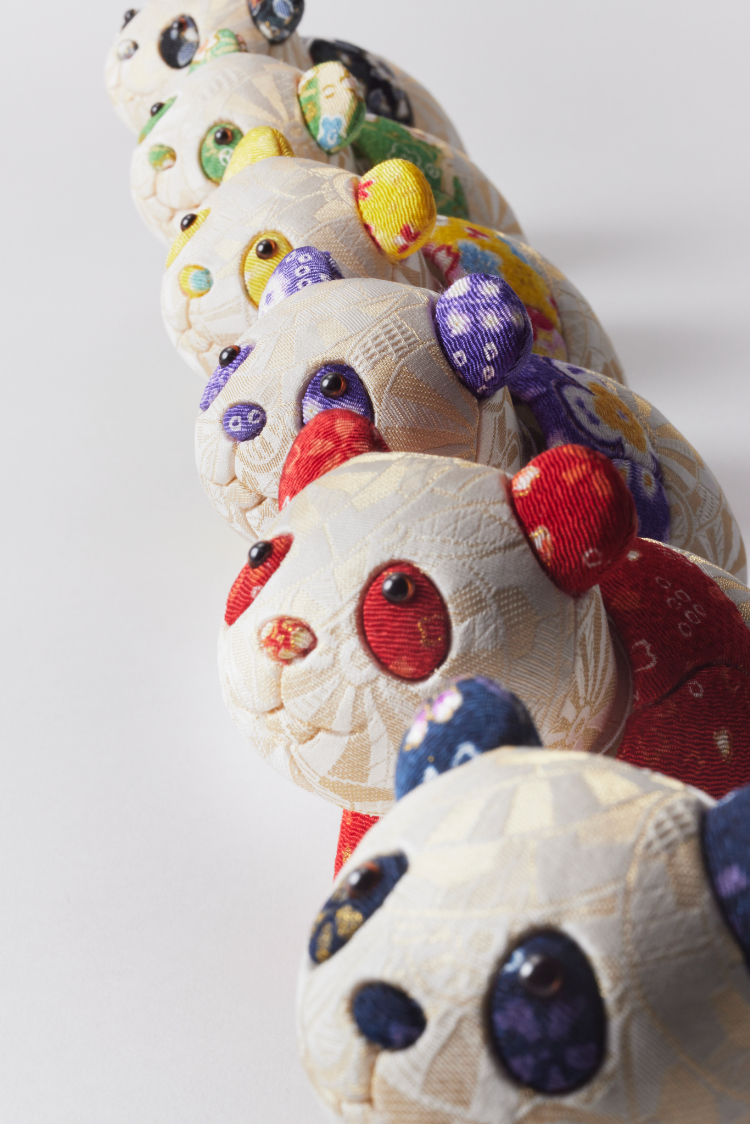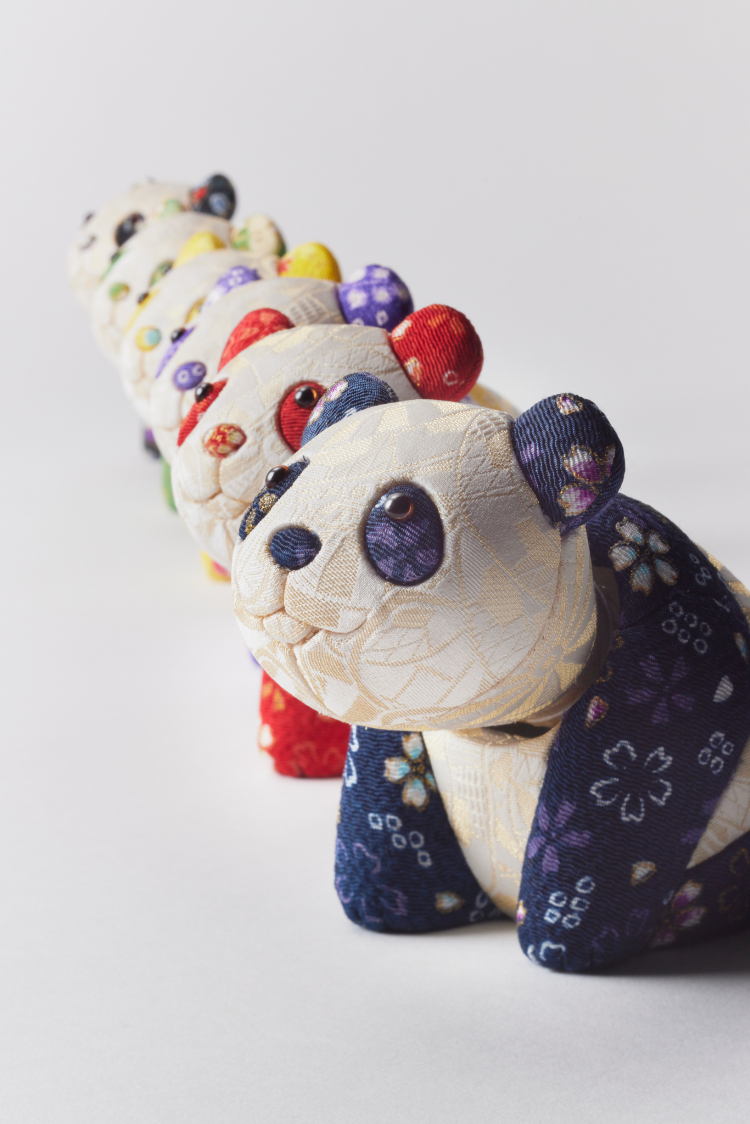“We named them Happy Pandas in hopes
that handling them will make people happy.”
Smiles appear on the faces of people
when they see the soft expressions
and endearing shapes of the pandas.
Toshimitsu Kakinuma,
who conceived of the pandas together with a designer,
is a traditional craftsman
who has inherited the Kimekomi techniques
that are used to produce seasonal hina dolls, etc.
A special clay known as toso
that is made by kneading the sawdust
from paulownia trees together
with wheat gluten starch
and then slowly dried at seventy degrees Celsius
for around two weeks
is used as the base to fill the inside of the pandas.
A whitewash known as gofun,
which is also used in Japanese paintings,
is then used to coat not only the inside
that can be seen through the seams joining the head to the body,
but also on the outside where it is concealed
from sight to enhance the beauty and strength of the end product.
The entire panda is then decorated with pure silk into
which thin metal threads less than 1mm thick have been imbedded using the Kimekomi technique,
and crepe fabric sporting Japanese patterns.
In addition to the panda-like jet black version,
five other versions that represent the five main seasonal festivals
are available to produce a series of six Japanese colors.
The degree of difficulty for the Kimekomi technique is increased on the back of the pandas.
It is here that the craftsmen display
their skills by perfecting the creases
and obtaining the perfect level of roundness.
Creating the correct shape
for the face and the correct muscular substance
to express a sense of cuteness
was the result of repeated trial and error.
Making the contours deeper
and extending the nose increases a sense of reality,
but also reduces the level of cuteness.
The shape was finally formulated
to ensure the desired level of roundness expressed with lines alone,
and it also enabled the Kimekomi technique to be used.
It was also a battle to obtain
the correct level of movement for the soft and swaying head.
Obtaining the correct weight balance was very difficult,
as the movement differs
when the weight is increased
or decreased by even one gram.
In order to obtain the perfect level of lightness,
urethane resin was used for the head instead of the toso clay.
Kakinuma,
who was also involved in the conception of other regular lineups
that match up with the sensibilities of the age,
such as the Kimekomi Maneki-neko series,
told us that he wanted to also place the emphasis
on traditional seasonal events.
Seasonal ornaments are presented to people
in the hope that their children will grow up healthily.
He believes that enjoying such decorations
together strengthens the bond between parents and children,
and nurtures an understanding of the importance of things.
Coming into contact with regular lineups
helps people fondly remember the joy of doll ornaments,
as well as helping them
to notice the merits of Kimekomi and other traditional crafts.
The hopes behind this
can be found incorporated into the Happy Pandas.
- Happy Panda
- Materials: Paulownia woodblock, polyurethane resin, rayon, pure silk
Size: W70mm × D120mm × H90mm
Types: “Traditional Colors of Japan Series (6 types)”
2296-1 Crimson
2296-2 Royal Purple
2296-3 Bright Golden Yellow
2296-4 Jet Black
2296-5 Indigo
2296-6 Young Bamboo
*The information on this site is as of May 2024.
*Sizes, colours and shapes of the actual products may differ slightly as they are
handmade.
*Product specifications and suggested retail prices may change without prior notice.

